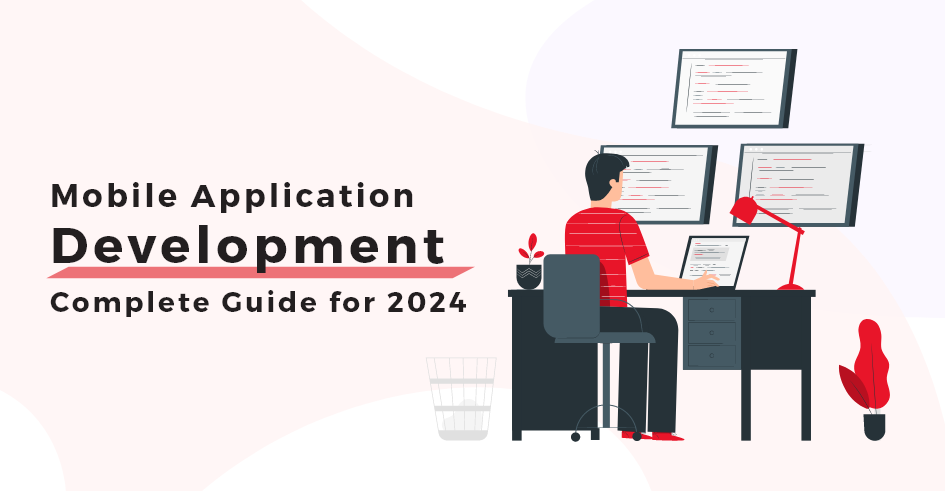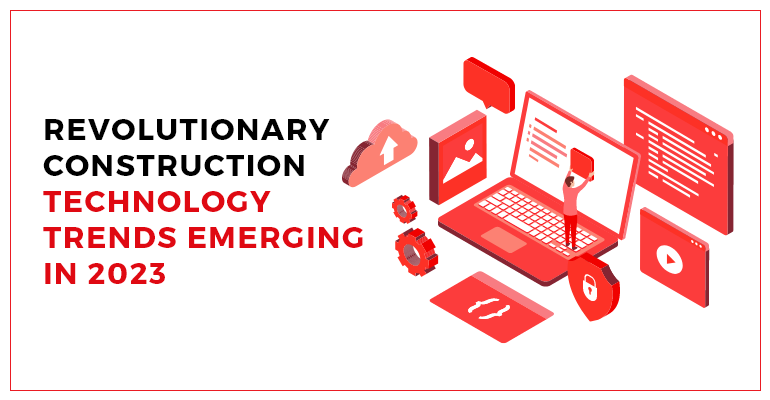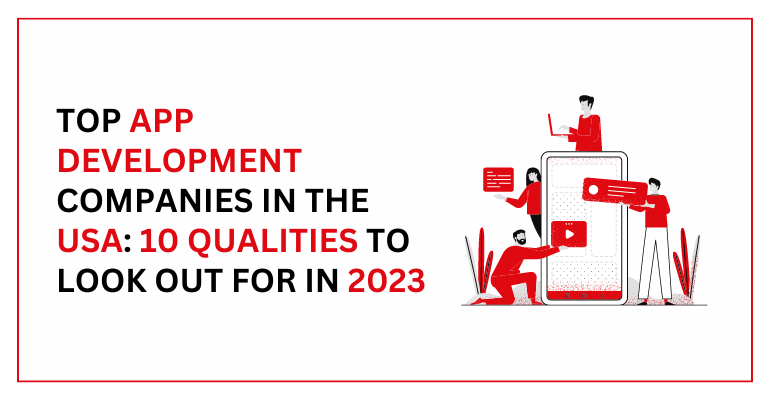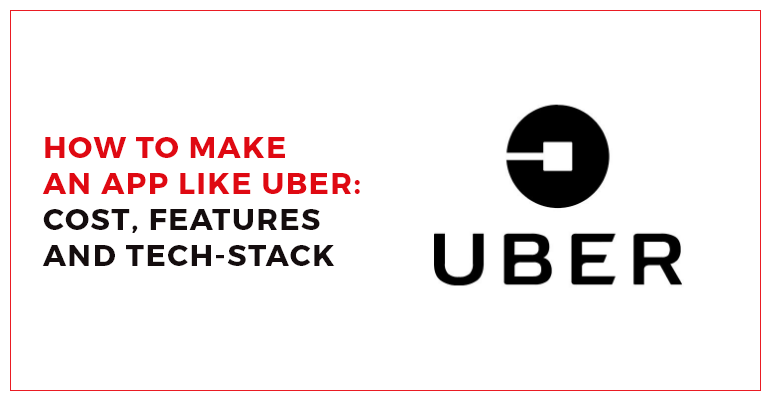Mobile app development has grown exponentially in the past few years. Smartphones have made our lives easier and convenient, and there is always an app available for anything you need. From online shopping to playing games to sending emails and much more, everything you desire is now on your palm.
What Is Mobile App Development?
In plain words, mobile app development is a process of developing apps that can be installed on your smartphone and provide a specific set of functions and features. These are the software that gets installed on hardware (mobile device) and then runs on it using features of that device.
Obviously, there is much more to an app running on your smartphone, but we are just keeping it simple and concise. We will explore more about apps later in the blog.
What Is the Real World Application of Mobile Apps?
Mobile apps are doing pretty much everything in the world today. Like we said earlier, there is an app for everything in the market, but to make it clearer, let’s discuss it again.
These days, mobile apps are being used in every industry. From education to music to social networking. You name the industry, and there will be an app available for use. One thing to be kept in mind is that sometimes, an app is developed for the masses and often for a specific group of people so other people cannot use it.
For example, if you wish to use your bank’s online banking service, you can do that with their app (if they have one) because you are an active account holder of that bank. But individuals not having an account will not be able to use the app.
What Are Some Main Categories of Mobile Applications?
Practically speaking, categories for mobile apps are uncountable and but there are some having the most use around the world. Let’s briefly go through them.
1. Gaming & Entertainment
Entertainment and gaming mobile applications are the most popular apps globally and have millions of users worldwide. In entertainment, you can find apps that play you songs of your choice or an application that lets you see a movie or TV show based on the genre of your liking.
In gaming, there are games available in a number of categories such as sports, arcade, puzzle, strategy, and the most popular these days, battle royale games.
Another main category that has a considerable application of mobile applications is the shopping and retail industry. Nowadays, you can buy anything while relaxing on your comfy couch at your home and without having to go out physically, it’s that easy.
The shopping and retail industries have seen a significant boost in their business after the widespread use of mobile apps, and a big chunk of their sales is now done through these apps.
3. Solution Provider
This is probably the most important market that mobile applications have captured. Since the inception of mobile applications, numerous apps have been built that focus on solving a particular problem using the latest features of the technology.
Whether it is transportation, education, consultation, information, traveling, or anything else, we have a digital, mobile app-based solution for every niche. Moreover, with each passing day, something new and innovative is launched in the market intended towards solving a problem.
Types of Mobile App Technologies
To develop mobile apps, there are many mobile app technologies that help us in building apps the way we like them. Initially, there was only one way to build the applications; the native mobile apps, but now there are other ways to develop your apps as well, with your chosen features. Let’s explore them one by one.
1. Native Apps
Native mobile applications are applications that are developed using platform-specific technology or language. There are two popular platforms having the most chunk of users, i.e., iOS and Android.
Google owns Android, while iOS is the brainchild of Apple. These two tech-giants are ruling the mobile industry right now, and currently their operating systems are the most used. Let’s learn a bit about these platforms as well.
2. Android
Android is an operating system for mobile devices and is the most used OS in the world right now. Android is an open-source platform and is owned and managed by Google. The IDE used for developing Android apps is called Android Studio, while there are other IDEs available as well. But what languages do we use to develop Android applications? Let’s find out.
3. Java
The first language that was used to develop native Android applications is Java. It is an old and mature programming language and has a wide use other than mobile apps. Android mobile applications are developed in Java, but some supporting components can be in C and C++.
4. Kotlin
In the year 2017, Google announced its official support of Kotlin programming language to develop Android-based mobile applications. One great feature of Kotlin is that its code can be used with Java, which means the libraries and functions in Java can be used while writing code in Kotlin. Many developers even prefer Kotlin over Java.
5. IOS
Apple’s iOS is the second most used smartphone operating system worldwide. The design and development constraints of this OS are different than Android. The IDE used for building iOS apps is XCode. iOS apps can only be built on Apple’s Mac OS, while Android has no such limitation. There are multiple languages used for developing iOS apps, have a look.
6. Objective C
Objective C was the first programming language that was used to build iOS-based mobile applications from Apple. This programming language borrows its design and development features from the C language and incorporates object-oriented techniques as well. It is still in use, and many developers use this language.
7. Swift
Swift is a relatively modern programming language used to develop iOS mobile apps. It was first introduced in the year 2014, and since then, it has become the first choice of many iOS developers around the globe.
8. Hybrid Apps
The term hybrid mobile applications refer to the apps that are developed once and can be installed and used on both iOS and Android platforms. These are also known as cross-platform mobile apps. There are quite a few technologies available now that let one develop hybrid applications. We will go through them sequentially.
9. React Native
React Native is a framework that uses JavaScript to build hybrid apps for Android or iOS. Any app written in React Native has almost the same code for both platforms but requires minor adjustments to it due to the platform-specific limitations. React Native is an open-source framework that is owned and created by Facebook.
10. Flutter
Flutter is another great tool to develop hybrid apps and it uses Dart as the programming language. It is a software development kit (SDK) by Google. Flutter, using Dart, is used to build impressive, backward-compatible hybrid mobile applications.
There are some other cross-platform mobile app development technologies too. Let’s have a quick look at them.
1. PWA
PWA, also known as Progressive Web App, is another modern way of developing hybrid mobile applications. These apps don’t need to be installed, instead accessed through a web browser and a URL. PWAs are built using HTML, CSS, JavaScript, and other languages and work on both mobile and desktop devices.
2. Ionic
Ionic is another SDK, similar to Flutter, for building hybrid mobile apps. It was built in 2013, and since then, many apps have been developed using it. It also uses HTML, CSS, JavaScript, and other languages to build hybrid smartphone applications.
3. Xamarin
Xamarin is another cross-platform apps development framework that uses C# to build applications for mobile devices. Other than Android and iOS, it also runs on Windows and has a slight advantage over other technologies because of it.
4. Others
Apart from those discussed above, there are a few other technologies used to build cross-platform applications. These include Native Script, BuildFire JS, Appcelerator, Cordova, and others, and all these come with their pros and cons.
Mobile App Development Process Flow
While this can be subjective, and there can be multiple ways companies develop applications, we have provided a holistic view of how things generally work in the mobile app development industry. Let’s dive right in
Before beginning work on a mobile app, the first step is to carry out thorough and extensive research on your mobile app’s idea. This phase requires brainstorming and inking down all the concepts and ideas that cross your mind. These can include the app’s functionality, the business model, your budget, resource allocation, and much more.
One good practice is to study your customers’ behavior and the market gap while keeping a close eye on your competitors, if there are any.
2. Identification of End Goals & Objectives
After you have jotted down all the ideas and possibilities, now is the time to filter them. Pick the goals and objectives of your app and try to define the scope of the project. Once that is done, you can now proceed with defining other functionalities of the system.
One crucial factor to be kept in consideration here is to mark your targeted audience and the value your system will add to the consumer’s lives. This will also help you allocate the budget for development and other needs.
3. Wireframing/UI Design
After the closure of the second phase, UI designing can begin. Designers assigned to the project will be briefed about it and will build beautiful yet easy to navigate designs that will define the app’s outlook.
After that, wireframing is done to define a roadmap and screen linkages on the app, and test the frontend functionality. Although wireframing doesn’t provide any functionality in the final product, it is essential to figure out any potential flaws and lay the design structure before the development work begins.
4. Backend Development
Next up is the backend development process. It can be considered as the backbone of any system because this is where all the data resides that can be fetched upon request through the use of Application Programming Interfaces or APIs.
During the development of the project, sometimes there might be a need to make changes in the wireframe design or the backend files, which is completely fine. It happens, and good practice across the industry is not to hesitate the change, rather accept it with open arms.
5. Integrate Frontend & Backend
Once backend development is complete, both frontend and backend are integrated. Any misconnections or flaws can be rectified at hand, and if the design is good, there is less chance that any major problem would occur.
6. Test, Test, Test!
Though testing never stops and is a continuous process, one final test against the use cases developed in light of the project scope is done on various parameters. This can include the design, frontend-backend integration, functionalities, loading times, memory usage, and more.
7. Beta Release
After everything is done, the app is then released for a small audience to be used and tested in real-world and actual scenarios. This helps cater to any errors that went unnoticed, which can be fixed at the earliest before the final release.
8. Final Release
The app’s final release is done after all the necessary checks are completed, and the app is ready to hit the market. Initially, the mobile app has to be closely monitored in case something comes up. Other routine support and maintenance checks are done according to the schedule while users enjoy the app.
Team Requirements
To develop a mobile app, you will require diverse skillsets, but it all depends on the project’s scale. The number of individuals varies and is on the personal prerogative to hire additional profiles for the project. The bigger the project and the higher the stakes, the bigger the team shall be. Below is a brief list of individuals that you need to build an app.
1. Designers
Designers are a necessary part of the mobile app development team. Their responsibility is to develop and design the UI/UX and make sure the design doesn’t lack in any pertinent aspect. These are the creative minds that create the application’s look and feel.
2. Developers
Developers are the individuals that do all the coding and bring life to the UI design. Coding includes backend, frontend, admin panel design, and other developmental tasks through various relevant technologies.
3. QA Engineer
QA is often ignored at many places, but it is always good to check the deliverables before reaching the client. QA Engineer is mainly responsible for managing all the tasks related to testing and quality.
4. Project Manager
A Project Manager is always needed to lead and close the project successfully. The Project Manager’s job is to make sure all the deadlines are met, and everything is running the way it is supposed to.
Development & Deployment Costs
The development and deployment costs of a mobile app differ according to its features, target industry, and other factors, but we will try to sum up how much an app can cost.
1. Native Apps
An Android App usually starts at $8,000 and goes up to $100,000 or even more, while an iOS app starts at $10,000 and goes up to $100,00 and more.
2. Hybrid Apps
Hybrid apps developed in Flutter or React Native for iOS and Android start at $20,000 and go way up depending upon their features.
End Note
Mobile app development is the future, and there is no denying it. This blog is intended to guide how mobile application development works, but this was just an overview, and there is still much more detail into this topic. If you want to develop a mobile app, instead of trying it on your own (unless you are an experienced coder), we suggest that you give this job to a reputed mobile apps development company, and they will take care of everything for you.





